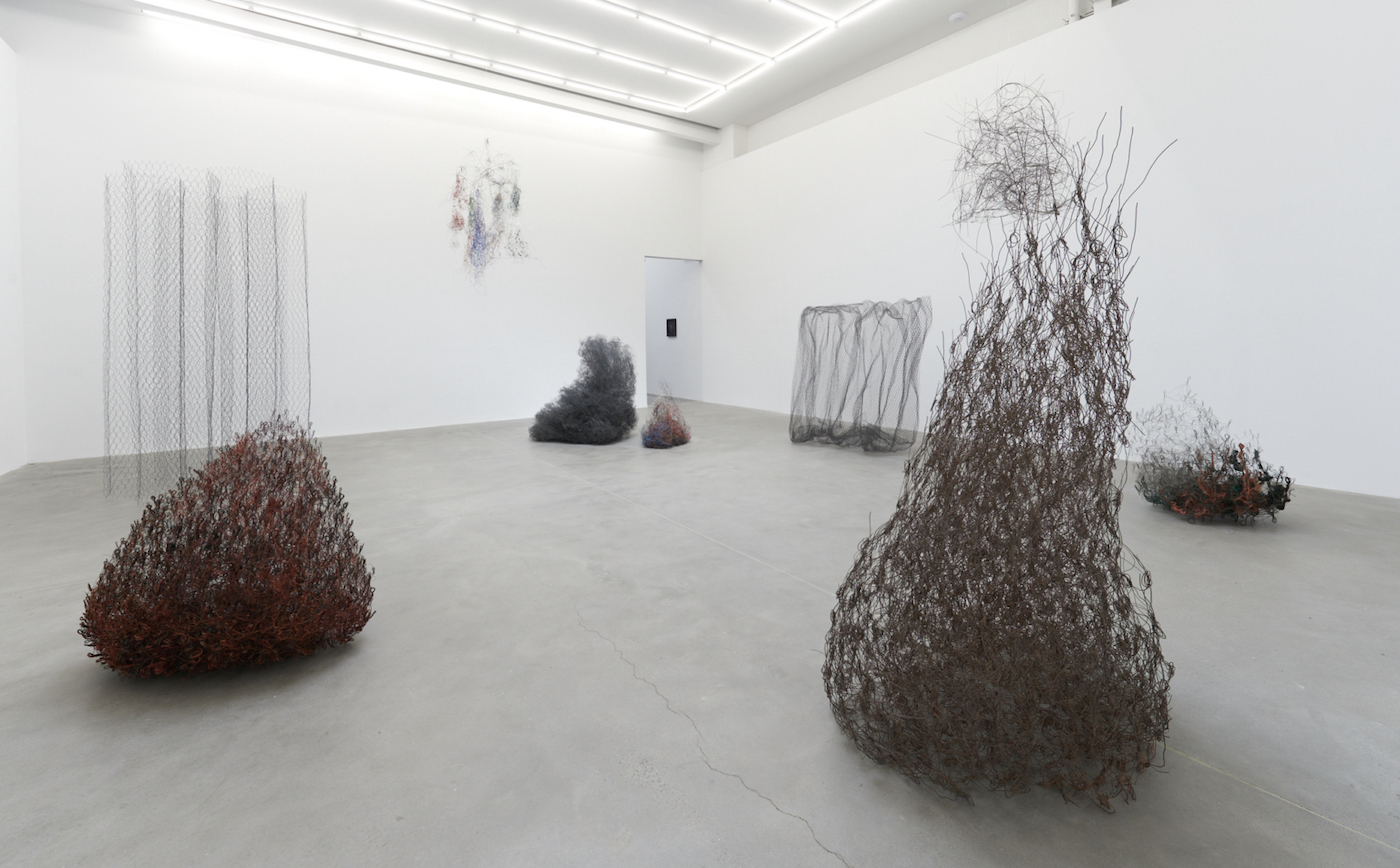
May 10, 2022
Download as PDF
View on The New Yorker
Since the nineteen-sixties, this New York artist has coaxed wire, whether single strands or rolls of mesh, into wild, ethereal forms. The sculptures assembled in this exhibition seem less like objects and more like abstracted angels and demons, each imbued with unique personalities and powers. A two-part piece titled “In Love,” first conceived in 1983, features a stunning volume of galvanized-steel hex netting (simultaneously suggesting a storm cloud, a charred bush, and a Balenciaga creation in tulle) leaning toward a smaller, teardrop-shaped partner made of multicolored magnet wire. “Spring Breath Be,” from 2012, is a hanging snarl of spiked curlicues, and the new “Willow Creek,” completed in 2022, is an elegantly irregular column that plays on the vaporous potentials of weblike fencing. Saret is often described as a post-minimalist, in part because of his fondness for industrial materials, but his work, with its mystic, anthropomorphic, and even feral qualities, defies isms, and his misfit alchemy feels especially fresh right now.



